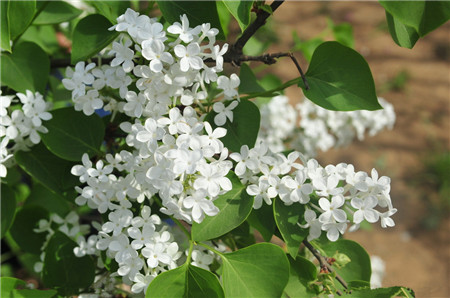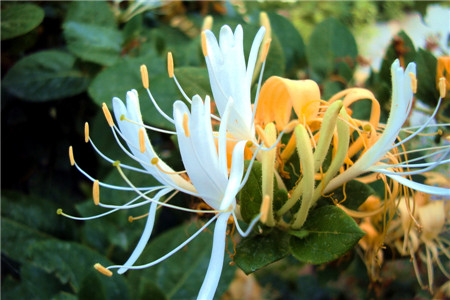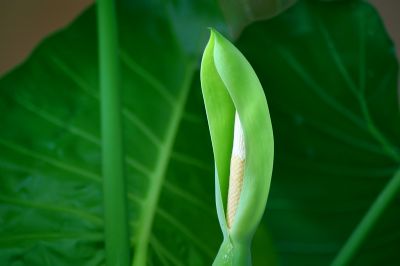Cultivation and management methods of lilac
First of all, the cultivation and management methods of cloves should be clearly distinguished between medicinal cloves and ornamental cloves, which are two completely different plants. The cultivation and management methods of medicinal cloves and ornamental cloves are different.
English alias: Baiknot, Valentine, lilac, seed clove, clove; lilac plant 2-8 meters tall, leaves opposite, entire or sometimes lobed, rarely pinnately compound. Flowers bisexual, in terminal or lateral panicles. The flower color is purple, lilac or blue-purple, there are also white purple-red and blue-purple, with white and purple as the majority. The purple one is lilac, the white one is white lilac, and the white clove is a variety of lilac with long oval capsule and septic.
Lilacs like the sun, more shade, like wet, but avoid stagnant water, cold and drought resistance,-generally do not need more watering. Cloves require rich and well-drained sandy soil. Cloves do not like big fat, do not fertilize too much, otherwise affect flowering. The Corolla is a raceme, belonging to an infinite flower sequence. Lilac sex like sunshine, slightly shade-resistant, cold-resistant, but also drought-resistant, like moist, avoid waterlogging. Strong stress resistance, lax requirements on the soil, but suitable for growing in fertile, loose, well-drained soil, do not plant in low-lying shady and wet places. Lilac flowers should be transplanted before sprouting in early spring.

In the transplanting hole, we should first apply sufficient base fertilizer, and then cover a layer of soil above the base fertilizer, and then put seedlings to fill the soil. After planting, it can be watered for one time, and then watered for 3 times to survive. Cloves have strong adaptability and extensive management. at ordinary times, as long as we pay attention to weeding, waterlogging in rainy season and watering in drought, we can grow smoothly. Cloves do not like to be too fat, do not fertilize too much, so as not to cause branches to grow and affect flowering. Just apply a rotten compost every year or every other year before the beginning of winter.
Before sprouting in the middle of March, cloves should be shaped and pruned. Sulfur should be removed from dense branches, weak branches, disease and insect branches, and vigorous long branches should be cut off to make the canopy ventilated and transparent. If there is no seed left after the flower fade, the residual flower together with the two buds in the lower part of the flower ear can be cut off to reduce nutrient consumption and promote the germination of new branches and the formation of flower buds. After falling leaves, you can also carry out a pruning to keep the crown round and beautiful, which is conducive to growth and flowering in the coming year.
In the cultivation and management methods of lilac, there are few diseases and insect pests. The main pests are aphids, pocket moths and thorns. It can be prevented by spraying alcohol with 800Mel 1000 times 40% dimethoate emulsion or 1000 times 25% imidophos emulsion. The cultivation and management methods of lilac flowers should first distinguish between medicinal cloves and ornamental lilac flowers are two completely different plants; Chinese alias: Baijie, lover, lilac, seed clove, clove; lilac plant height 2-8 meters, leaves opposite, entire or sometimes lobed, rarely pinnately compound leaves. Flowers bisexual, in terminal or lateral panicles. The flower color is purple, lilac or blue-purple, there are also white purple-red and blue-purple, with white and purple as the majority. The purple one is lilac, the white one is white lilac, and the white clove is a variety of lilac with long oval capsule and septic. Cloves like sunshine, more shady, like moist, but avoid stagnant water, cold and drought resistance, generally do not need more watering. Cloves require rich and well-drained sandy soil. Cloves do not like big fat, do not fertilize too much, otherwise affect flowering. The Corolla is a raceme, belonging to an infinite flower sequence. Lilac sex like sunshine, slightly shade-resistant, cold-resistant, but also drought-resistant, like moist, avoid waterlogging. Strong stress resistance, lax requirements on the soil, but suitable for growing in fertile, loose, well-drained soil, do not plant in low-lying shady and wet places. Lilac flowers should be transplanted before sprouting in early spring. In the transplanting hole, we should first apply sufficient base fertilizer, cover the base fertilizer with a layer of soil, and then put seedlings to fill the soil. Watering once after planting, and then watering 2murine water for 3 times can survive. Cloves have strong adaptability and extensive management. at ordinary times, as long as we pay attention to weeding, waterlogging in rainy season and watering in drought, we can grow smoothly. Cloves do not like to be too fat, do not fertilize too much, so as not to cause branches to grow and affect flowering. It is generally possible to apply rotten compost once a year or every other year before winter. Before sprouting in the middle of March, cloves should be shaped and pruned. Sulfur should be removed from dense branches, weak branches, disease and insect branches, and vigorous long branches should be cut off to make the canopy ventilated and transparent. If there is no seed left after the flower fade, the residual flower together with the two buds in the lower part of the flower ear can be cut off to reduce nutrient consumption and promote the germination of new branches and the formation of flower buds. After falling leaves, you can also carry out a pruning to keep the crown round and beautiful, which is conducive to growth and flowering in the coming year. Cultivation and management of lilac
Cultivation and management of lilac
Syringa, also known as lilac, myrtle family, some species of flowers can be extracted from aromatic oil, but also nectar plants
(1) it is one of the most popular flowers in Europe because of its loveliness and fragrance. Lilac is a small deciduous tree of Melilotus family. It blossoms from April to May and bears racemose panicles on the upper part of the branch. there are many lilac flowers on the inflorescence. the inflorescences are 10-20 cm long and the flowers are tube-shaped and more than 10 cm long.
Cloves are native to southeastern Europe and have a weak tolerance to summer heat. Lilac flowers of this species are lavender, while horticultural varieties are colorful, including white, light red, purple red, azure and double species.
(2) because the cultivation method is suitable for fertile land with sufficient sunshine and good drainage, it is necessary to choose places with good ventilation in warm areas and avoid western sun exposure, so as to avoid mixed planting with other trees, and it is best to plant a single plant and cultivate it into a near-natural plant shape.
(3) the key points of management should be re-pruned after flowering to cut off the horizontally expanded branches. In order to get enough sunshine in the canopy, the extra branches should be cut off during the deciduous period. In order to make the flowers grow well, careful fertilization is needed, but nitrogen fertilizer should be controlled the most. In the aspect of diseases and insect pests, attention should be paid to the control of powdery mildew, aphids and longicorn beetle larvae.
(4) the suitable period of transplanting and colonization is the defoliation stage except severe cold, and high planting should be carried out, and additional pillars should be set up if necessary.
- Prev

Cultivation techniques of Flos Lonicerae
Honeysuckle has strong adaptability, and the choice of soil and climate is not strict, and the sandy loam with thicker soil layer is the best. Hillsides, terraces, Weirs, dams and barren hills can all be cultivated. Propagation can be done by sowing, cuttings and root splitting. Bud and blossom on the new branch of the year. The soil is not strict and acidic.
- Next

8 common breeding problems of Dishui Guanyin
Dishui Guanyin is a common indoor plant, perennial herb. The stem is thicker and has obvious effect on dust removal. Guangdong people call Guanyin dripping wolf poison. The reason is that Dishui Guanyin is toxic. If you are a child at home, be careful if you want to cultivate Dishui Guanyin.
Related
- Fuxing push coffee new agricultural production and marketing class: lack of small-scale processing plants
- Jujube rice field leisure farm deep ploughing Yilan for five years to create a space for organic food and play
- Nongyu Farm-A trial of organic papaya for brave women with advanced technology
- Four points for attention in the prevention and control of diseases and insect pests of edible fungi
- How to add nutrient solution to Edible Fungi
- Is there any good way to control edible fungus mites?
- Open Inoculation Technology of Edible Fungi
- Is there any clever way to use fertilizer for edible fungus in winter?
- What agents are used to kill the pathogens of edible fungi in the mushroom shed?
- Rapid drying of Edible Fungi

